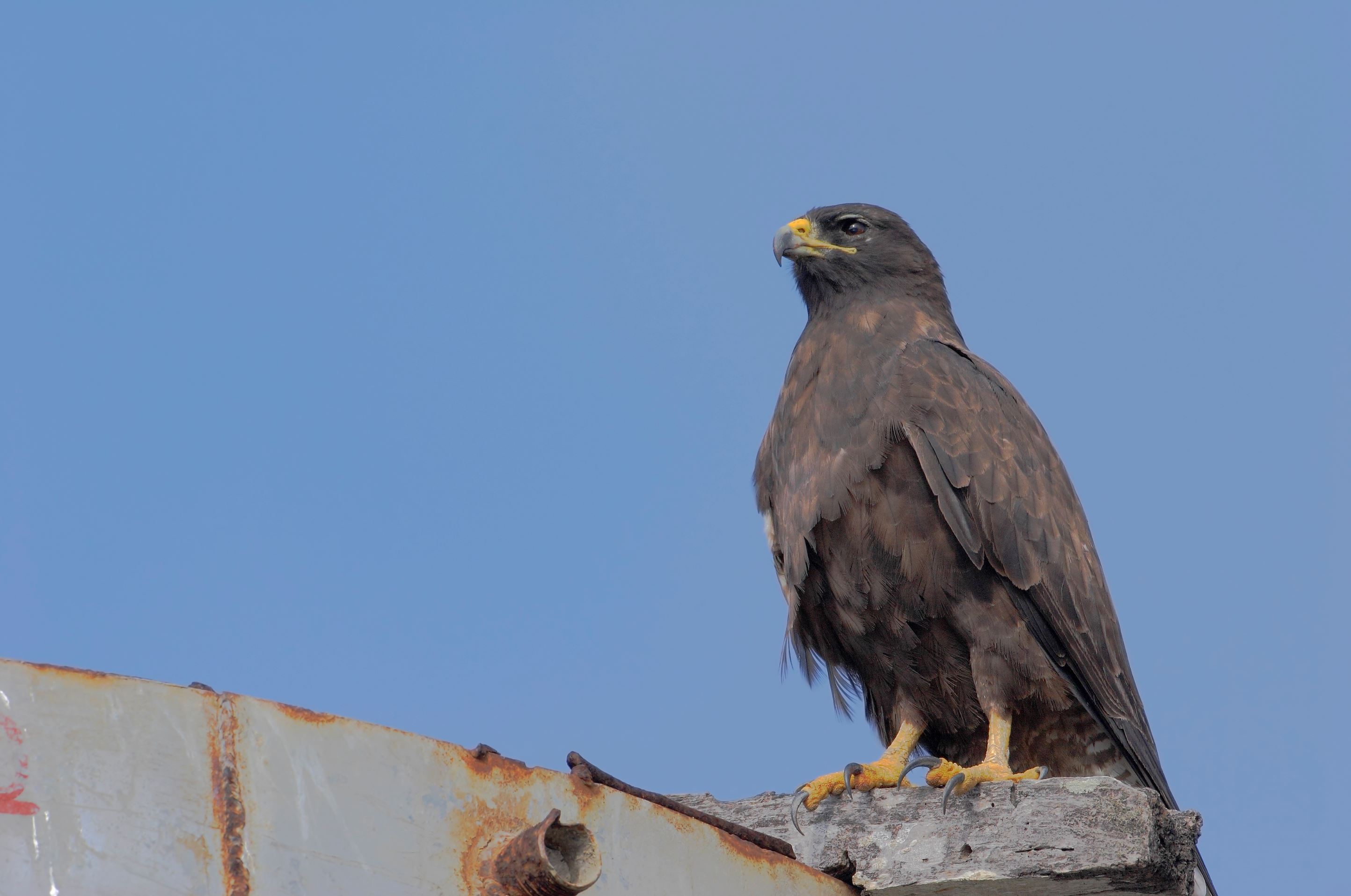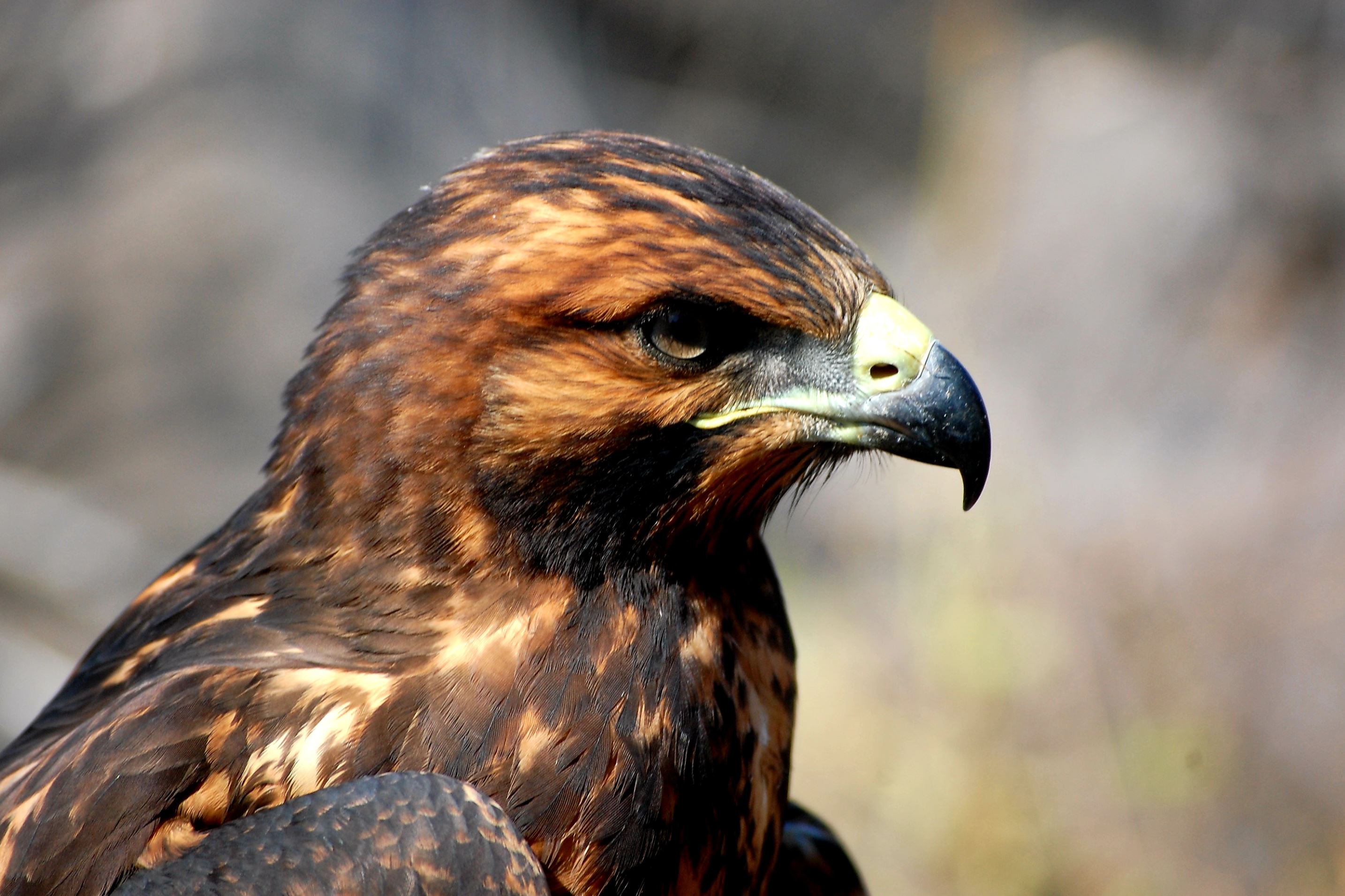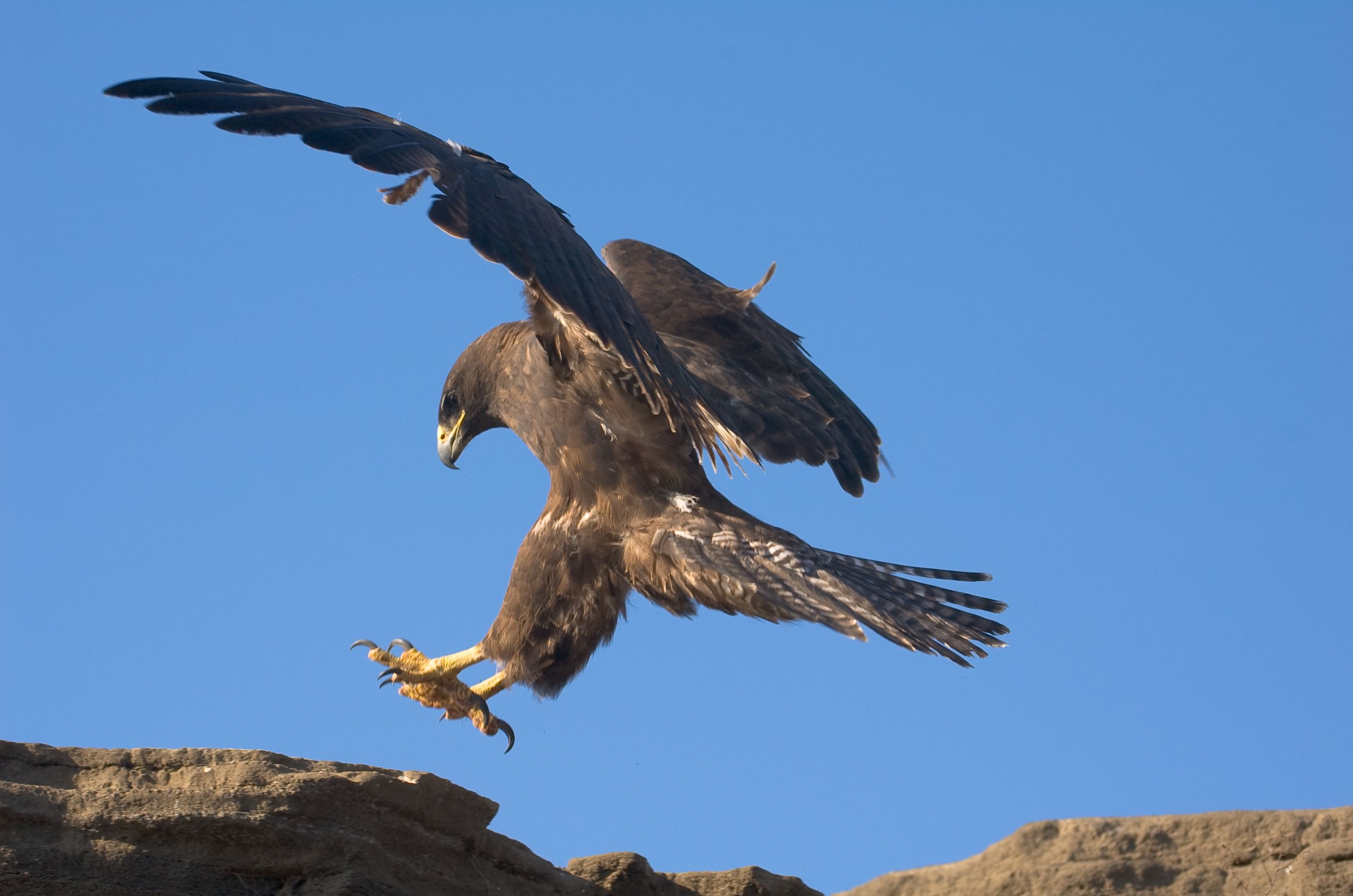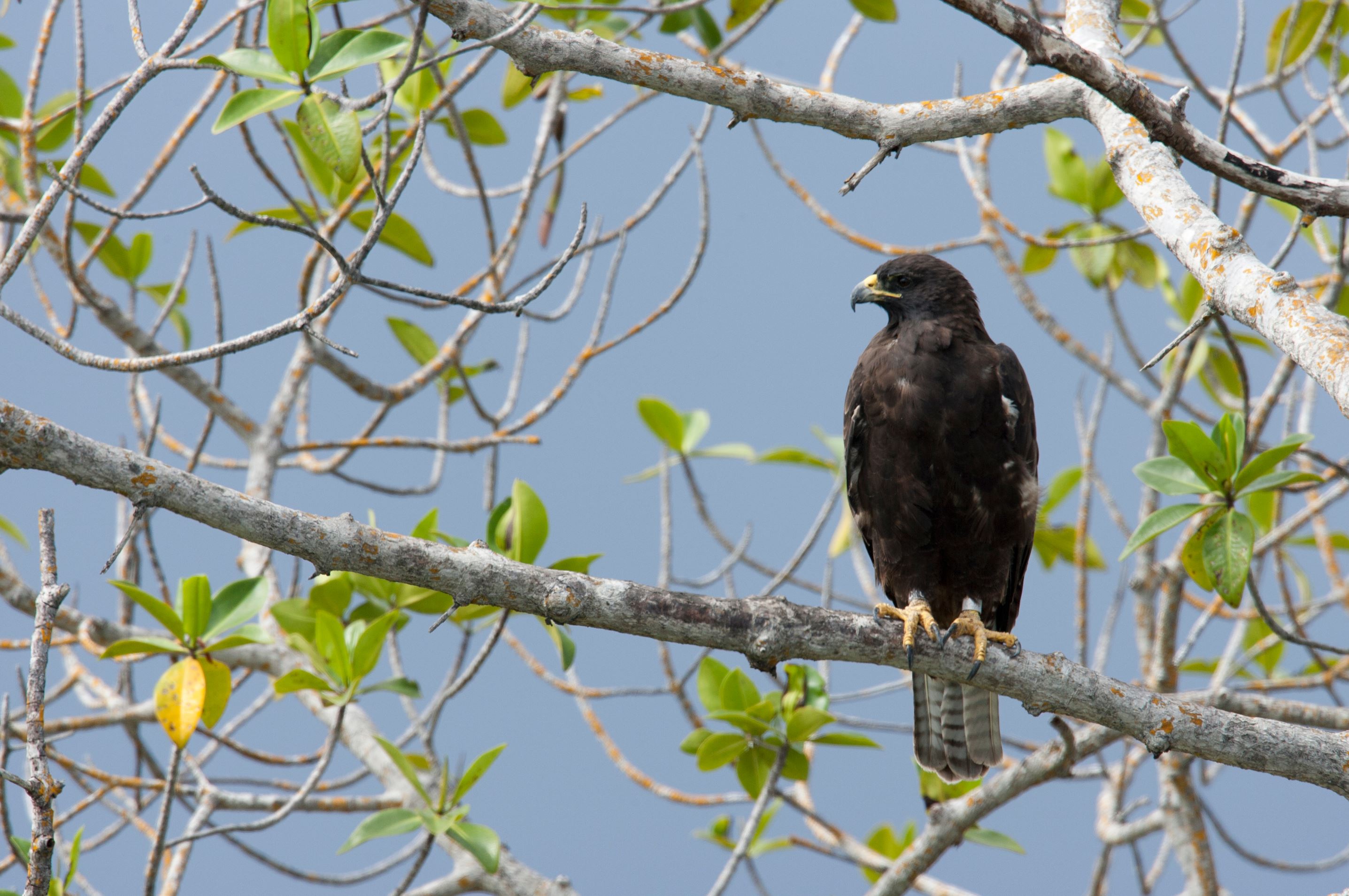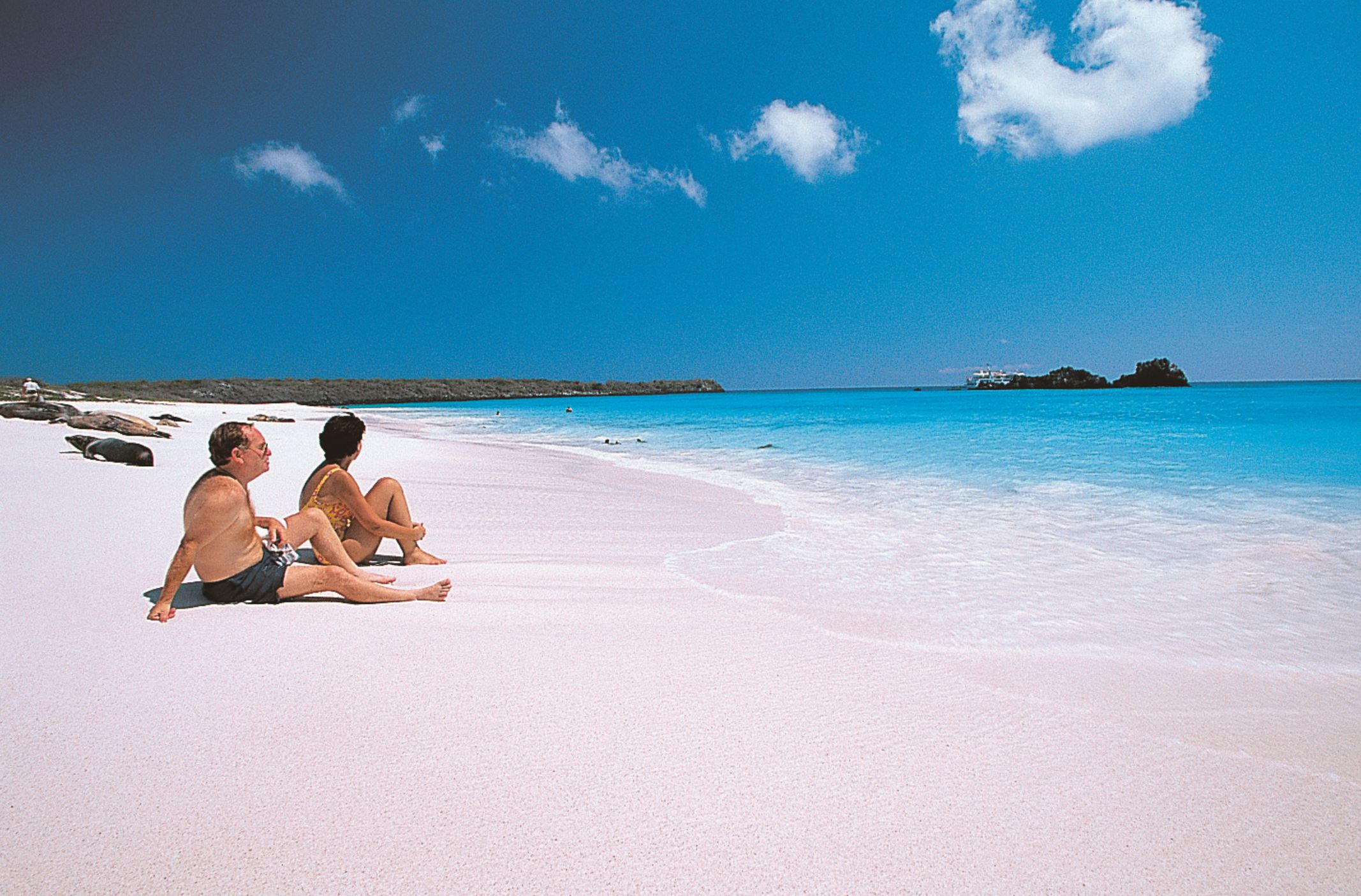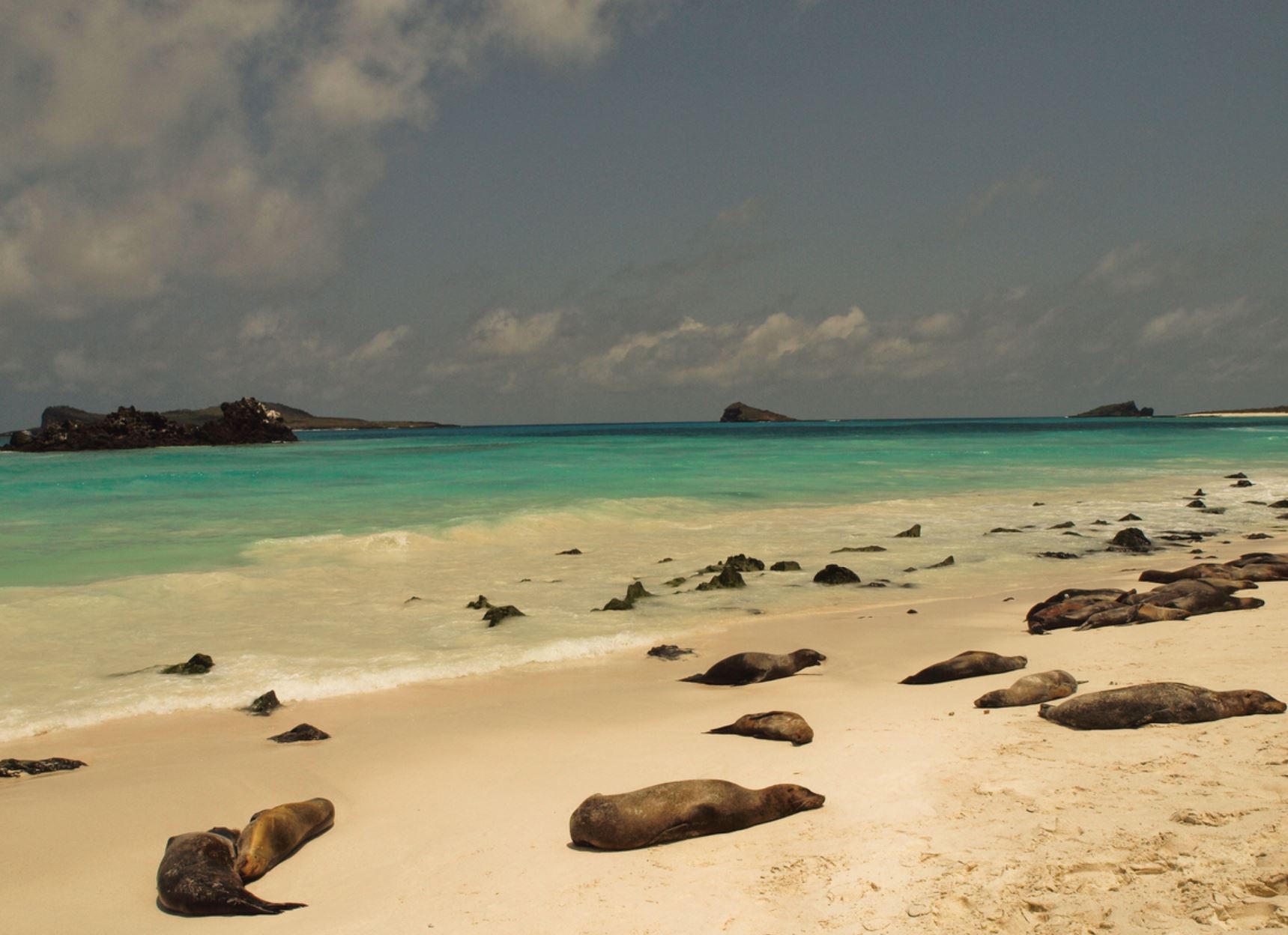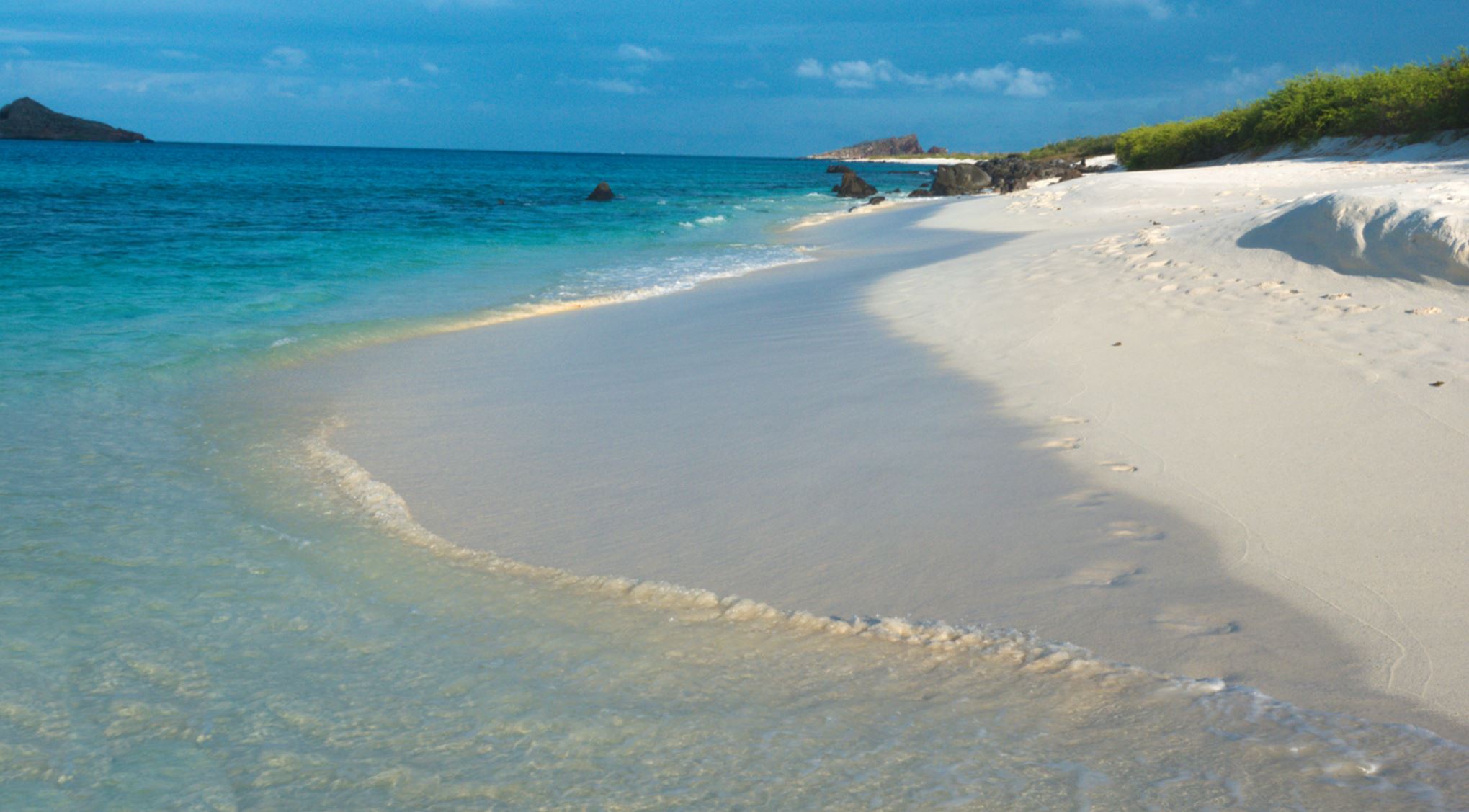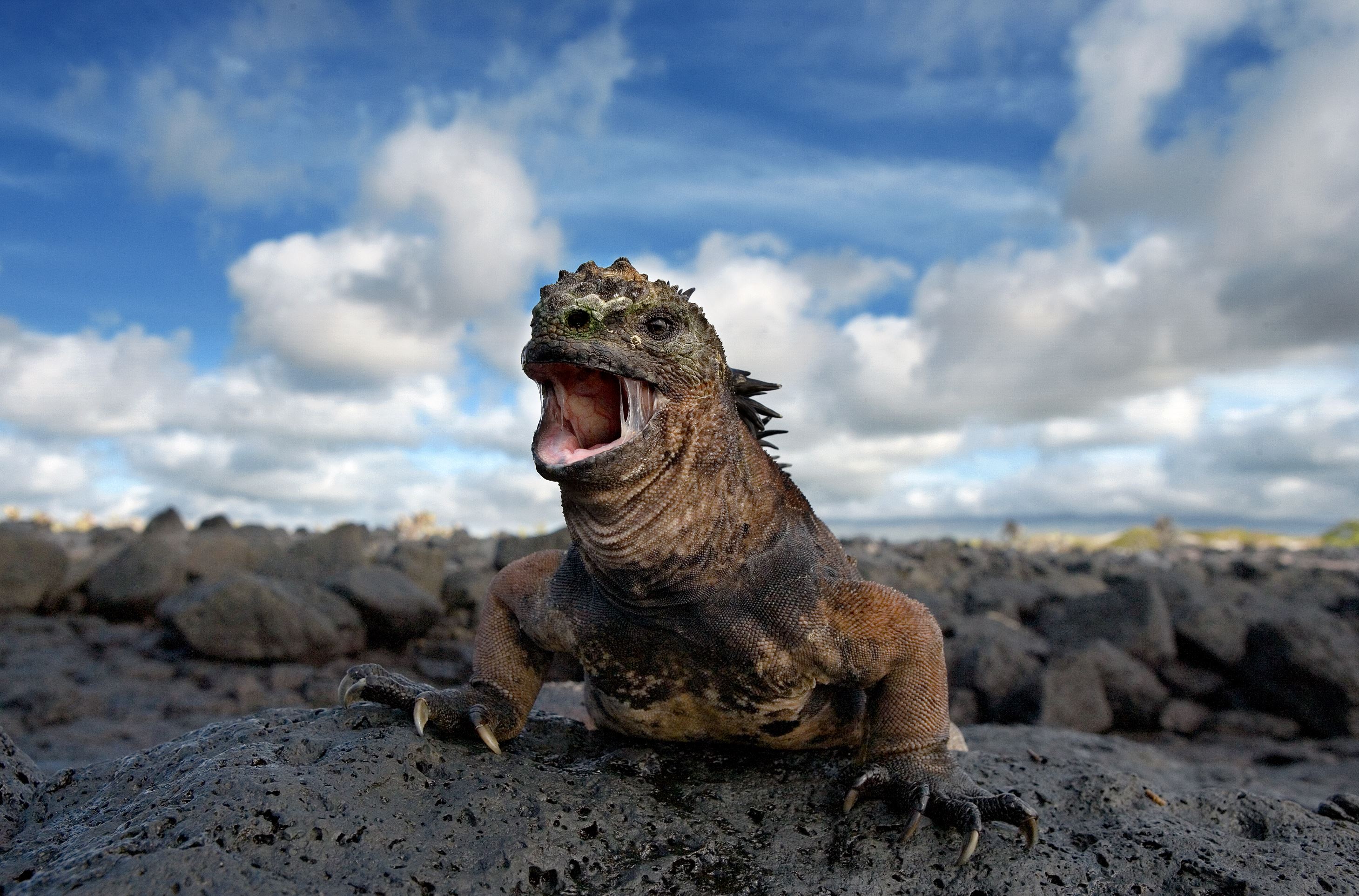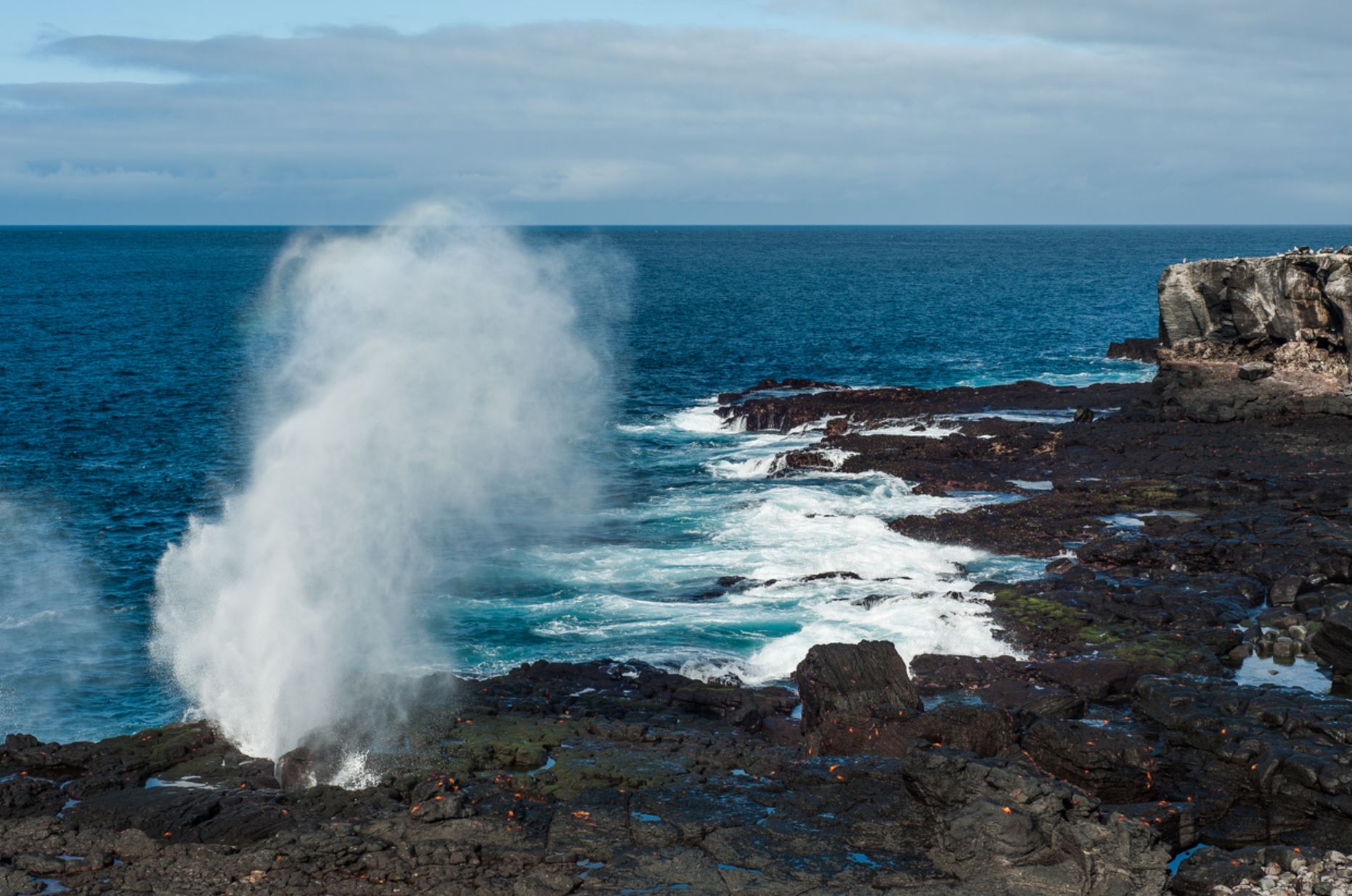Galapagos Hawk
The Galapagos Hawk is endemic to the Galapagos and is similar to the red tailed hook that can be found in North America. The hawks found in Española Island are the biggest in the archipelago averaging 1,140gr, and the smallest are found in Marchena Island weighing about 844gr. Males are smaller and lighter than females.
This bird has developed an interesting breeding method. As many as 3 hawks would reproduce with the same female and all would assist the nursing by bringing food. They lay 3 to 6 eggs, and depending on the food availability, all will survive.
They feed on dead animals and also hunt insects, mammals, reptiles and other birds. However, there are few birds that are fearless of the hawks, such as the mockingbird that would even fight them to protect their nest. They can hunt in groups of 3, one being the leader, displaying strategic chasing or mocking when needed.
There are supposed to be about 300 individuals in the archipelago, so they are highly endangered, mainly because of introduced species. They are currently extinct in Baltra, Daphne, Floreana, San Cristobal, and Seymour islands.
- Animal Group: Landbirds
- Scientific Name: Buteo galapagoensis
- Animal Average Size: 45 - 58 cm
- Animal Average Weight: 844 - 1.223 gr
Places where you may see this animal:
Española
Pictures
Islands where you can see the animal with a little luck:
Española
English named for the Española Island it Hood Island after Viscount Samuel Hood. It is located in the extreme southeast of the archipelago and is considered, along with Santa Fé, one of the oldest Galapagos islands, at approximately four million years. A popular tourist stop, Isla Española is the most southerly island in the Galápagos Archipelago. The climate is very dry, like most of the Archipelago. But due to the flatness of the island, it is the driest of these islands, with only a few inches of rain per year. It is about a 10- to 12-hour trip by boat from Isla Santa Cruz.
Tourists come to see the waved albatrosses (from March to January, almost the entire world population breeds on the island) and the mating dances of blue-footed boobies. Two spots are especially popular with visitors: Bahía Gardner, which has a lovely beach; and Punta Suárez, of interest because of its varied bird-life. This island has its own species of animals, such as the Hood mockingbird, which has a longer and more curved beak than the one on the central islands; the Española lava lizard and the marine iguana of the subspecies venustissimus, which has red markings on its back. There are also swallow-tailed gulls, Galapagos hawks and other birds. The island has been recognised as an Important Bird Area (IBA) by BirdLife International.
While Española Island is one of the oldest of the Galápagos Islands, this island is dying, slowly becoming a rocky, barren land with little or no vegetation. But this does give large bays, with sand and soft shingle which attracts a healthy number of Galapagos sea lions. In January 2020, it was widely reported that a male Galapagos tortoise named Diego fathered and resurrected the island tortoise population, saving the diminishing species from near extinction.
Visitor sites:
Gardner Bay, Suarez Point, Osborn islet
Mr. Frobeen can give you precise information about the ships.
Mr. Frobeen will be happy to advise you by phone at +49 (0)7633 9399360 or via email info@frobeen.de
If you want to book, what are the payment methods?
The reservation is gratis as an option.
If you want to make an fixed booking, there is to pay a deposit of 20%.
The remaining payment is due 4 weeks before departure. In individual cases, such as diving cruises, other rules apply. Information on request.
- Your payments are insured against bankruptcy!

